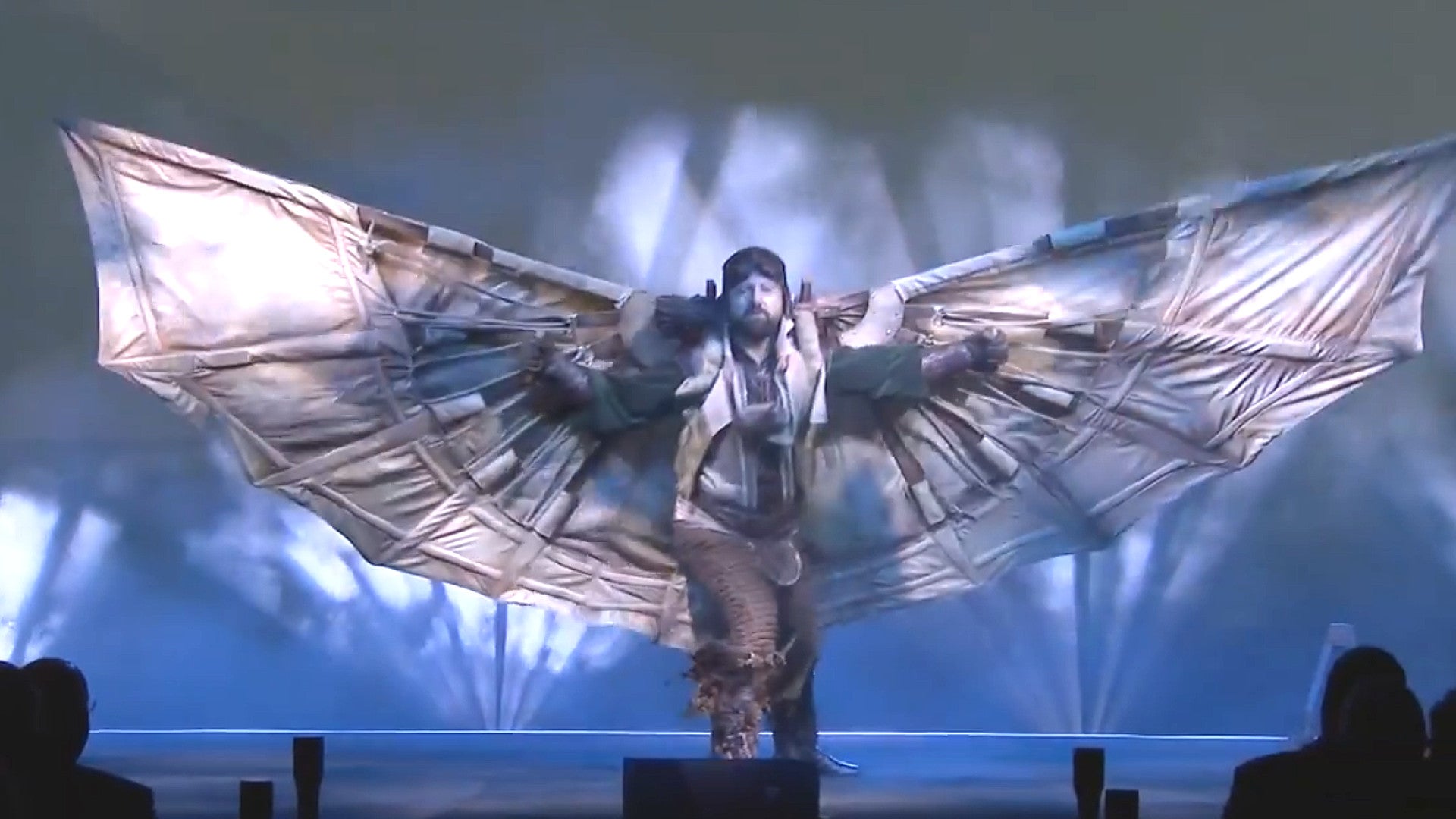Rollout events for major new combat aircraft are often flashy, overwrought affairs to begin with, but the Lockheed Martin event to celebrate the delivery of Turkey’s first completed F-35 Joint Strike Fighter was particularly over the top, featuring traditional music and song together with a dancer who performed at one point while wearing a pair massive leather wings that looked like something out of Leonardo Da Vinci’s notebooks.
What this sometimes surreal celebration didn’t have was any direct reference to the very serious and steadily escalating political spat between the U.S. and Turkish governments that threatens to upend the stealth fighter deliveries over the latter country’s purchase of Russian-made S-400 surface-to-air missile systems.
Lockheed Martin hosted the ceremony on June 21, 2018, at its plant in Fort Worth, Texas that builds the F-35. In the near future, the Turkish Air Force will fly its two initial F-35As to Luke Air Force Base in Arizona to begin training alongside the U.S. Air Force and other international Joint Strike Fighter partners. Turkey has been actively involved in the F-35 program from the beginning and plans to purchase more than 100 of the jets in total, making it one of the largest customers to date. Turkish defense contractors are also involved in the production of certain components of the aircraft and are slated to provide maintenance support to other European customers in the future.
“As you are all well aware, Turkey is located at the geostrategic and cultural crossroads between the East and the West,” Turkish Major General Reha Ufuk Er said during the event. “On the other hand, it’s geographic location and proximity to the conflict areas significantly increases the security challenges it faces. All of these factors necessitate that Turkey has robust capabilities to ensure her contribution to regional and global security environment.”
Standing in front of the jet on the stage, the officer added that the F-35 was a “great asset” to help Turkey achieve its own security goals, as well as increasing the capabilities of the NATO alliance. It’s also worth noting that the aircraft was flanked by a 2,000-pound class bomb with the HGK GPS/INS guidance kit and a Stand Off Missile (SOM) air-launched cruise missile, two Turkish-made weapons the country plans to eventually integrate onto its version of the plane.
“Turkey has allocated a significant amount of financial sources to this partnership and has provided an enormous contribution to the program from the very beginning,” Serdar Demirel, the Deputy head of Turkey’s Undersecretariat for Defense Industries, added separately. “As Turkey continues to serve global and peace and security as a reliable and committed NATO ally, the deployment of F-35s will help the protection of our security and territorial integrity of our country for future generations.”
There’s no doubt that the F-35 would give the Turkish Air Force a significant boost in capability. But neither individual directly mentioned U.S. lawmakers were looking to find ways to block the transfer of the jets to Turkey over its S-400 purchase, as well as its arrest of a U.S. citizen in 2017, a saga you can read more about in detail here. Demirel’s comments did seem to indirectly touch on the growing crisis by pointing out just how much Turkey is directly intertwined in the program.
You can watch the full rollout ceremony below. The dance routine begins at around 33:30 in the video’s runtime.

“I would like to say that, starting from the AA-1 [the first U.S. Air Force F-35A], the first F-35 aircraft, there’s a part which is produced by the Turkish industry on every aircraft flying now,” he pointedly declared. “So, we are very proud that we are the [sic; a] partner of this program and we own this weapon system.”
While Turkey definitely owns the jets themselves, it remains unclear if American legislators can find a way to block future deliveries or will succeed in cutting the Turkish government off from the aircraft’s central cloud-based computer network, logistics chain, training support, and other services that could effectively ground the planes or otherwise limit their functionality. Secretary of Defense James Mattis is reportedly in favor of resolving the issues as fast as possible to ensure the Turkish Air Force can get its Joint Strike Fighters and operate them without any issues, but so far Congress remains staunchly opposed to the idea.
We will be keeping a close eye on the situation as it continues to develop, but it’s possible that Turkey’s F-35s could end up being as airworthy as the dancer on stage in Fort Worth.
Contact the author: jtrevithickpr@gmail.com
